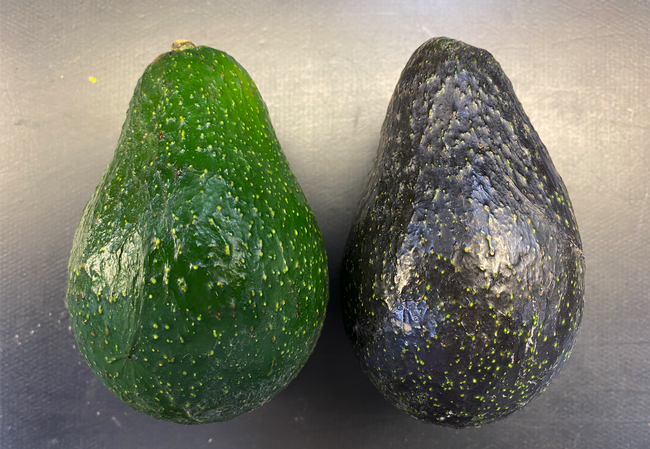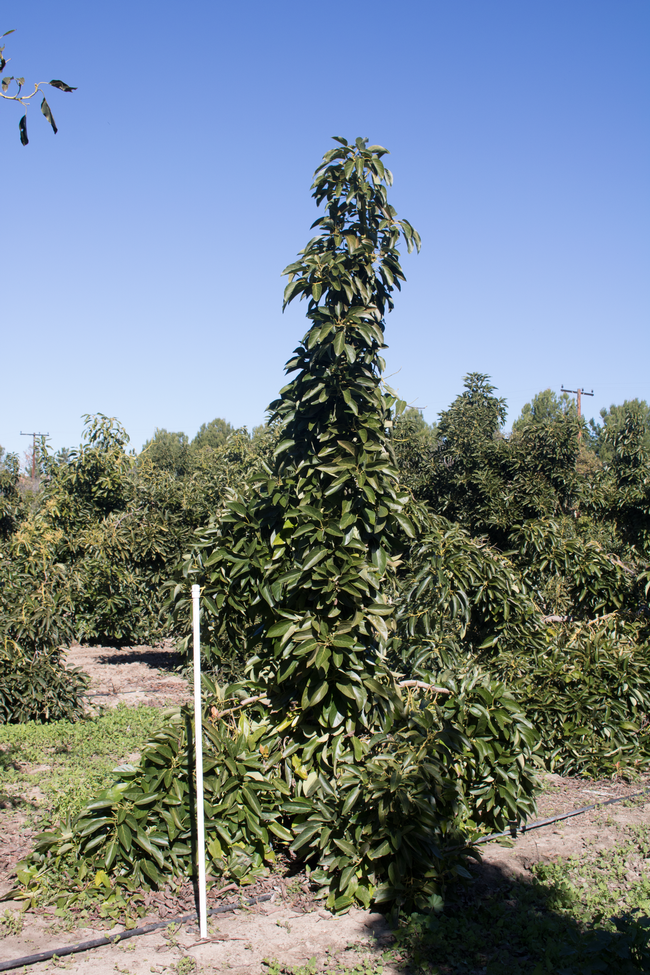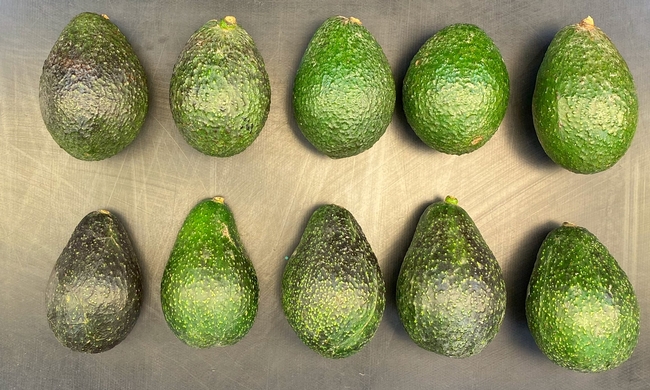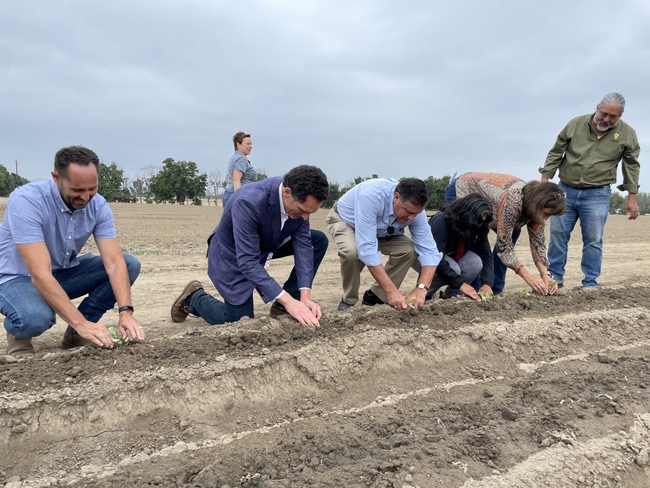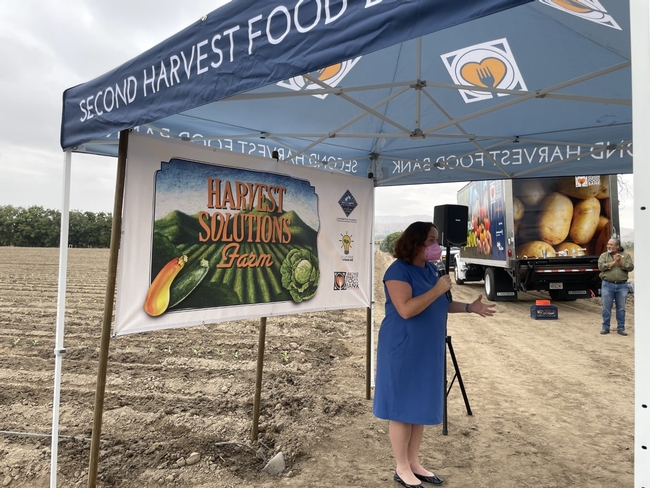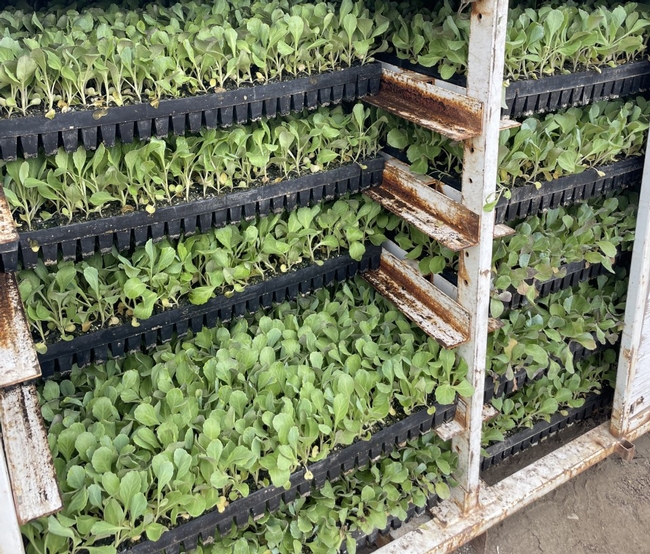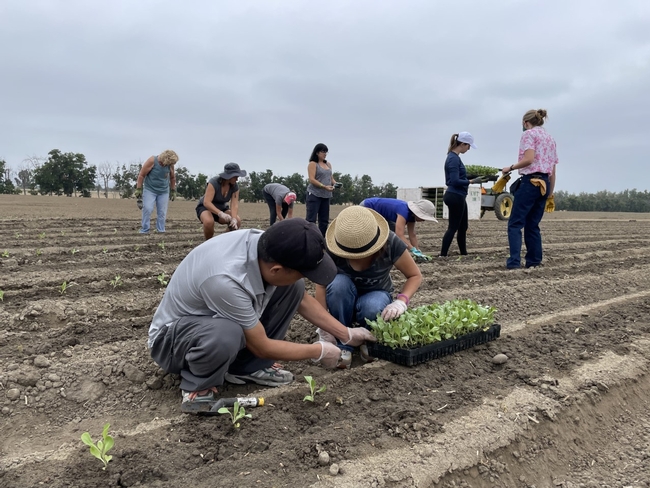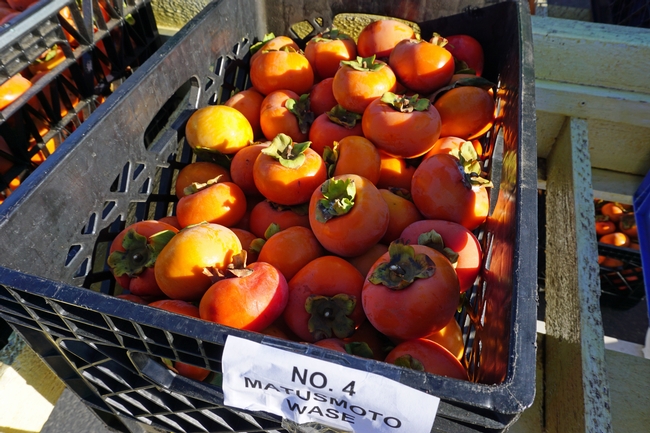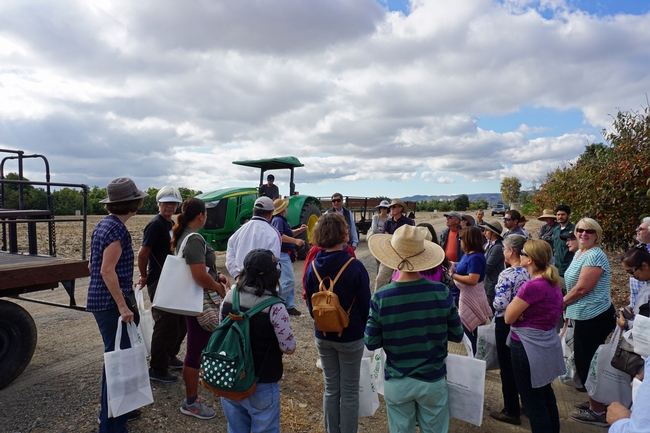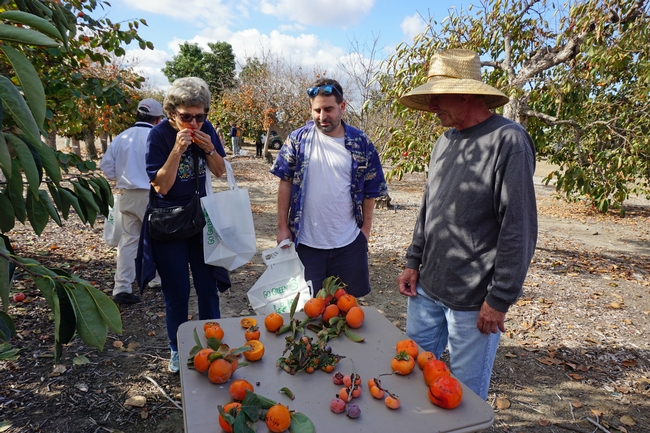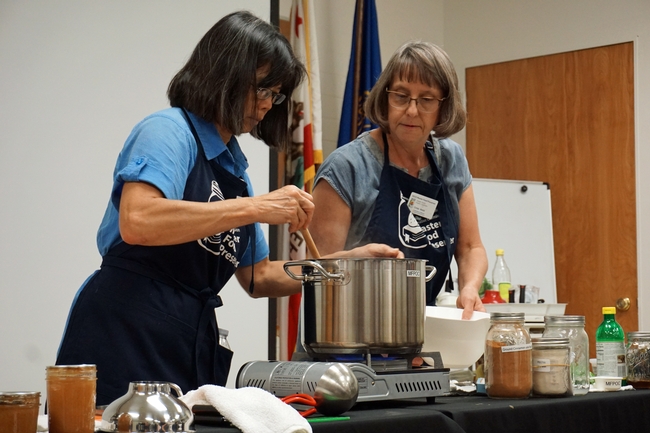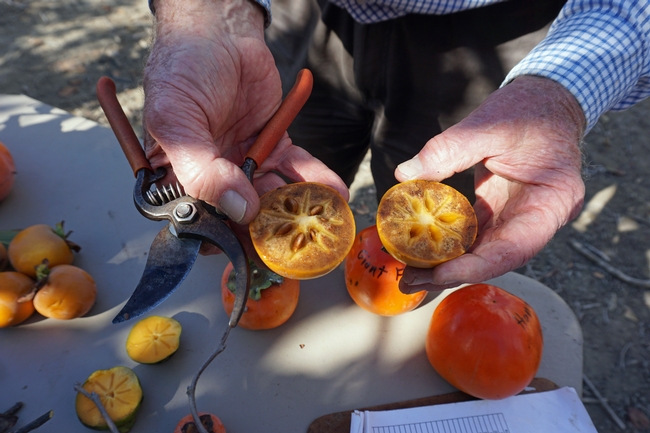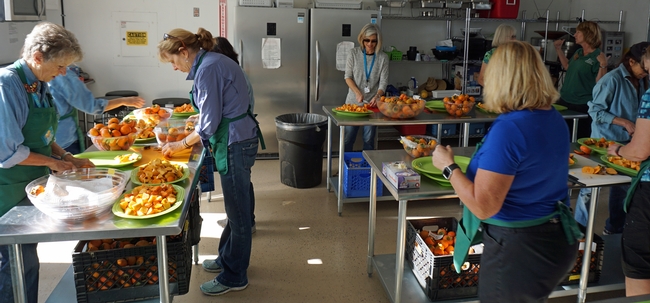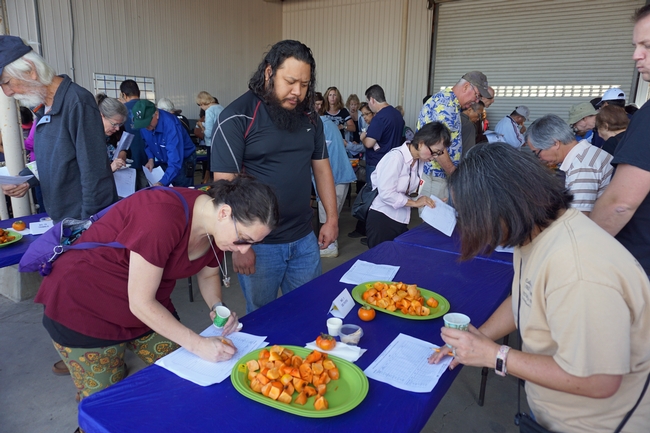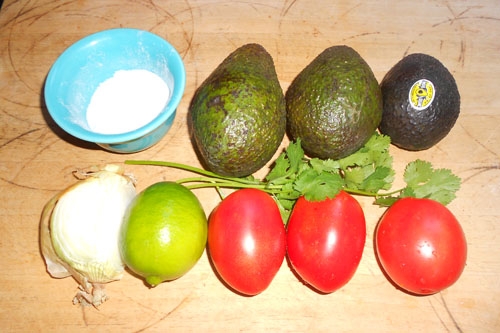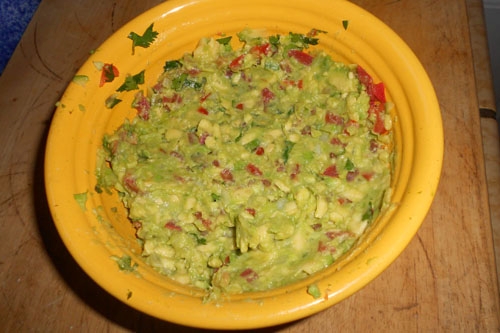Posts Tagged: South Coast
New avocado proves tasty, safer to harvest at UC ANR Research and Extension Centers
A new avocado, one that complements the widely known ‘Hass,' will hit the world market soon. The ‘Luna UCR' variety (trademarked and patent pending) has several characteristics that should be of interest to both growers and consumers, said Mary Lu Arpaia, University of California Cooperative Extension subtropical horticulture specialist based at UC Riverside.
From the grower perspective, the tree is about half the size of the leading variety while producing approximately the same yield per tree as ‘Hass,' meaning that growers could plant more trees per acre, therefore increasing yield. It also makes harvesting easier and safer.
Another advantage is the flowering behavior of the tree. Avocado trees are categorized into either Type A or Type B flower types. It is generally accepted that you need both flower types in a planting to maximize productivity. The ‘Hass' is an “A” flower type and ‘Luna UCR' is a Type “B.”
This is a potential boost for growers since the current varieties that are “B” flower types ripen green and generally receive lower prices for the grower. Similar to ‘Hass,' however, the ‘Luna UCR' colors as it ripens.
“Hopefully, it will receive similar returns to the ‘Hass' once it is an established variety,” Arpaia added.
Fruit breeding is a long-term process that she has navigated by building upon the work of her predecessors. Of course, Arpaia has had strong support from colleagues as well, including Eric Focht, a UC Riverside staff researcher and co-inventor of ‘Luna UCR.'
“We had been looking at ‘Luna UCR' for some time and it was always a very good eating fruit,” Focht said. “After the 2003 release of ‘GEM' (registered and patented as ‘3-29-5', 2003) and ‘Harvest' (patented as ‘N4(-)5', 2003) varieties, ‘Luna UCR' was always the top contender for a next release due to the small, narrow growth habit, “B” flower type and the fruit quality.”
“It's a very nice-looking fruit as well and seemed to be a pretty consistent bearer from year to year.”
A glimpse at how it all started
In spring 1996, Arpaia took over the UC Avocado Breeding Program following Guy Witney who led the program from 1992 to 1995, and Bob Bergh whose initial efforts in the 1950s were foundational in the inception of ‘Luna UCR.'
Arpaia recalls the first trials in the early 2000s of ‘Luna UCR,' which were tested alongside other promising selections from the Bergh program. “There were a lot of varieties that didn't perform well, some of which had poor storage life, an important trait that we need if we are going to get the fruit to consumers across the country,” said Arpaia.
The original seed and selection were planted at the Bob Lamb Ranch in Camarillo, and originally advanced trials of the ‘Luna UCR' variety were planted in four locations: UC Lindcove Research and Extension Center in Tulare County, UC South Coast Research and Extension Center in Orange County, a privately owned farm in San Diego County and another one in Ventura County.
The RECs are among the nine hubs operated by UC Agriculture and Natural Resources to support research and educate the public on regional agricultural and natural resource challenges.
ANR Research and Extension Centers become vital
Unfortunately, the 2017 Thomas Fire burned the avocado trees in Ventura, said Arpaia. After a change in management, the trial located in San Diego County was also terminated, leaving the two trials at Lindcove and South Coast REC.
“South Coast REC has a long history of supporting research and extension activities of high value crops important to California, including avocados,” said Darren Haver, director of the South Coast REC, which was often used to show growers the new varieties that were being developed.
“Many of the REC staff have worked with the avocado-breeding program researchers for more than two decades and continue to work closely with them to ensure the success of new avocado varieties, including ‘Luna UCR',” he added.
In addition to the support provided by South Coast and Lindcove RECs, Arpaia said that UC Kearney Agricultural Research and Extension Center in Fresno County – another UC ANR facility – made it possible for her team to conduct critical postharvest and sensory research, and consumer testing of the fruit, which included up to six-week trials of fruit ratings for storage life and taste.
“UC ANR has played an important role in our ability to not only identify ‘Luna UCR', but in preparing it for the world market, too,” she said.
Preparing to share with the world
Since 2015, Focht had been collecting data for the patent application. Now that he and Arpaia have successfully patented and trademarked ‘Luna UCR,' they are preparing to expand production by engaging interested growers with the commercial partner, Green Motion who is based in Spain.
“Green Motion contracted for 1,000 trees to be generated by Brokaw Nursery and those trees are currently being distributed, with earliest field plantings likely taking place in fall,” explained Focht.
Focht also said that Mission Produce, based in Oxnard, CA has contracted to graft over a small number of “B” flower type pollinizer trees to the new ‘Luna UCR' variety, possibly making way for a small number of avocados to be available the following year.
Once planted, the avocado trees will come into “full” production in about five years.
To read this story in Spanish, visit: https://ucanr.edu/blogs/blogcore/postdetail.cfm?postnum=58991
To grow vegetables locally, Second Harvest partners with UC South Coast REC
Partnering for California
A.G. Kawamura to grow produce at UC South Coast Research and Extension Center for Orange County food bank
Driven to provide consistent access to nutritious food for residents in Orange County, Second Harvest Food Bank is exploring new fields of possibility – fields amounting to 45 acres at the University of California Agriculture and Natural Resources' South Coast Research and Extension Center in Irvine.
With grower A.G. Kawamura, Solutions for Urban Ag chairman and former California secretary of Food and Agriculture, the food bank recently planted its first cabbage transplants to generate a steady flow of fresh, locally grown produce for its pantry network.
Harvest Solutions Farm is expected to produce 40,000 pounds of cabbage per week as of Nov. 18 when the first harvest is expected to take place. When all 45 acres are fully planted, they are anticipated to yield 160,000 pounds of produce per month.
“Fresh produce is so important to the health of a community,” said Darren Haver, director of the agricultural research facility. “Through this unique public-private partnership, UC South Coast Research and Extension Center is able to provide land and volunteers to assist in planting and harvesting to supply nutritious food to people in our community in need.”
On Aug. 31, Second Harvest Board Chairman Dave Coffaro, Kawamura and Haver were joined at UC South Coast REC by Irvine Mayor Farrah Khan, Representative Katie Porter of Irvine and Orange County Supervisor Don Wagner for the ceremonial planting of the first crop. Volunteers transplanted approximately 26,000 cabbage seedlings.
“This is a historic day for Second Harvest Food Bank of Orange County,” said Coffaro. “Few food banks, if any, have attempted to grow their own food on this large a scale. Our unique good fortune to have access to 45 acres in the heart of an urban center like Irvine, where we are able to cultivate an array of crops and supply our food pantry partners with fresh, nutritious produce brings us a huge step closer to making nutritional security a reality for our entire community.”
Produce key component of Second Harvest's nutritional strategy
Harvest Solutions Farm is the latest component in Second Harvest's strategy to attain nutrition security for all. The food bank has begun focusing on planned nutrition based on consistent access to fresh protein, produce and dairy – rather than relying on situational nutrition driven solely by donations.
Second Harvest is prioritizing the weekly purchase and donation of nutritious food to provide children and families with consistent access to the nutrient-dense food that can set them up for success in school and at work. Fresh produce is a key component of a nutritious diet.
“After this initial planting of cabbage, which is a hearty, versatile vegetable that's easy to grow and a nutritional mainstay in a variety of cultures, the second planting in May 2022 will include zucchini, squash and mini bell peppers,” saidKawamura. “When the 45 acres are fully planted with these vegetables, with regular crop rotations, I expect it to yield 600,000 pounds per month, which is comparable to two 53-foot semi-truck trailers full of locally grown produce going into the community.”
Creating supply chain resiliency and environmental benefits
The farm also allows Second Harvest to mitigate challenges like pandemic-induced inflated food prices and supply chain disruptions.
“We previously bought vegetables from the Central Valley. Last year, we had to work around lags in the supply chain, which means healthy food was less plentiful for Orange County families in need,” Coffaro said. “This farm will create an end-to-end produce supply chain for us and those we serve.”
Further, by growing produce locally, Second Harvest will drastically cut its “time to the dinner plate,” delivering greater health benefits because the produce will be fresher when it reaches families.
The farm will be maintained primarily by 40 volunteers during three-hour shifts, starting with one to two scheduled opportunities per week. Volunteers must be at least 18 years of age, but opportunities for children to participate will be available in the near future.
Thanksgiving persimmons are autumn joy
When the weather cools in the fall and the holidays draw near, orange orbs ripen on persimmon trees in California to offer a fresh autumn sweetness in time for Thanksgiving recipes and holiday décor.
At the UC South Coast Research and Extension Center (SCREC) in Irvine, a collection of 53 persimmon varieties are at their peak in November when the public is invited for tasting and harvesting at the annual persimmon field day.
“We want to raise awareness about persimmons,” said Tammy Majcherek, SCREC community educator. “It's a beautiful tree and a great addition to any landscape. Persimmon trees provide shade in the summer, healthy fruit in the fall, then drop their leaves and allow the sun's warmth to come through in the winter. It's a win-win situation as far as landscape trees go.”
The persimmon collection came to the research center in the 1960s, when the late UCLA subtropical horticulture professor Art Schroeder arranged to move his collection of persimmon varieties to another venue because the pressure of urban development at the Westwood campus became too great.
Persimmons are native in two parts of the world, China and the United States. The Chinese persimmon made its way to Japan, where its popularity soared. The American persimmon comes from the Southeastern United States, however, most California persimmons trace their lineage to Asia.
California leads the nation in persimmon production, according to the California Department of Agriculture Crop Report, but with a value of about $21 million in 2012, it represents just a small fraction of the state's $19 billion 2012 tree fruit and nut value.
Nevertheless, to the visitors who came out to tour UC's collection at SCREC, persimmon is a choice fruit. Participants on the early-morning VIP tour received a large shopping bag to fill with various varieties of fuyu and hachiya persimmons. Fuyu are flat, yellow-orange fruit that can be eaten right off the tree like apples or allowed to mature to a super-sweet soft pulp. Hachiya are redder, heart-shaped and astringent when not fully ripened. “If you bite it, it will bite your mouth right back,” said one participant.
However, after ripening to a jelly soft pulp or dried, the hachiya is equally delicious.
Shirley Salado, the UC Cooperative Extension Expanded Food and Nutrition Education Program supervisor in San Diego County, attended the persimmon tasting to gather fruit and information for her education program.
“The fuyu is great to eat,” Salado said. “When they ripen and become very soft, you can put the pulp in a blender and then freeze in zipper bags to add to healthy smoothies.”
Salado collected two large bags of persimmons to share with her nutrition education staff.
“Not everybody knows about these,” Salado said. “This gives them a chance to look at the fruit. This is what we promote.”
Following the tour, coordinator of the UC Master Food Preserver program at SCREC Cinda Webb demonstrated safe consumption by making cinnamon persimmon jam, dried persimmon chips, and a gourmet persimmon, basil, beet and rice salad.
Wild or brown rice persimmon salad
4 cups wild or brown rice, cooked
2 Fuyu persimmons, chopped
1 cup cooked, chopped beets
1 cup basic, chopped
8 oz feta cheese
½ cup orange cumin vinaigrette
Vinaigrette (makes about 1 cup)
½ cup orange juice
¼ cup olive oil
2 tsp rice vinegar
1 Tbsp maple syrup
1½ tsp cumin
1 tsp coriander
½ tsp salt
Directions
- Whisk together vinaigrette dressing ingredients
- Stir basil, beets, persimmons and feta into rice and toss with ½ cup vinaigrette.
- Top with persimmon slices and extra chopped basil for presentation.
Adding variety: avocados and guacamole
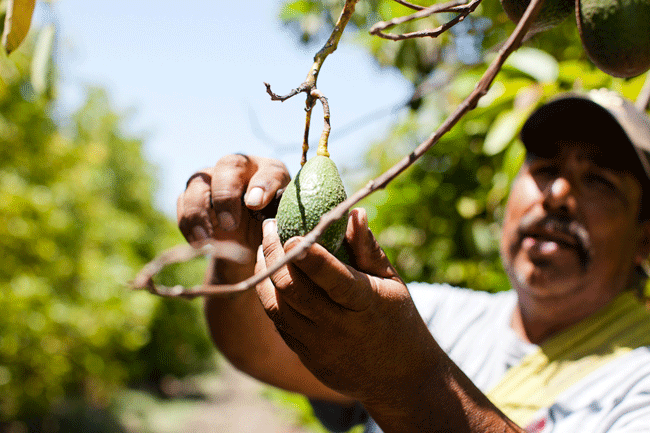
I have limited cooking skills, so I’m lucky that my wife is a great cook and an even better baker – lemon bars, anyone?
But there’s one dish she prefers that I prepare: guacamole. I was thinking about this when I was reviewing our recent photo shoot at UC ANR’s South Coast Research and Extension Center in Irvine, which included images of strawberries, citrus and avocados.
“Our whole goal is to make the industry in California more sustainable,” said UC Cooperative Extension specialist Mary Lu Arpaia, in the Department of Botany and Plant Sciences at UC Riverside.
Arpaia leads UC’s efforts to develop new avocado varieties. The dominant variety, Hass, started in 1926 in Southern California and has become so common globally that it could become generic, Arpaia said.
“My belief is the way we’re going to differentiate ourselves as a California industry and survive is by breeding something unique,” Arpaia said.
UC Riverside has developed several avocado varieties, signing a license agreement last year for its latest release, GEM. The great-granddaughter of the Hass avocado, GEM shares Hass’ desired characteristics such as a creamy, nutty flesh while offering growers additional benefits such as being a smaller tree that typically is more productive, Arpaia said.
Arpaia is evaluating more varieties. The next potential release is likely two to three years away, she said.
Meanwhile, Arpaia also is collaborating with the U.S. Department of Agriculture to improve the postharvest quality of avocados – how packing houses and distribution centers should handle the fruit, for how long and at what temperature.
“People definitely like fruit that is creamy, smooth, nutty and buttery. They like fruit that has a pleasant aftertaste,” said Arpaia, who conducts monthly avocado tasting panels at UC Riverside.
Packed with nearly 20 nutrients including potassium, avocados are an appetizing addition to salads and sandwiches. Arpaia likes them sliced, eaten alone, in a salad or on a warm corn tortilla. Some like them sweet in cheesecake or milkshakes. Of course, they’re best known as the base ingredient in guacamole.
I keep my guacamole simple: avocados (three), white onion (one-third), Roma tomatoes (three), lime (one), cilantro and salt. I start by scooping out the avocado pulp, slicing it into medium chunks and putting it in a bowl, mixing in lime juice. Then I dice the onion and tomatoes (seeded) into fine pieces and toss them in the bowl, followed by chopped cilantro. Next, I mash it up with a spoon, sprinkling on some salt and more lime juice. Test it and then serve.
For a spicier version, add garlic, jalapeños or serranos. The possibilities are plentiful. Just make sure you start with ripe avocados. What’s your favorite guacamole recipe?


